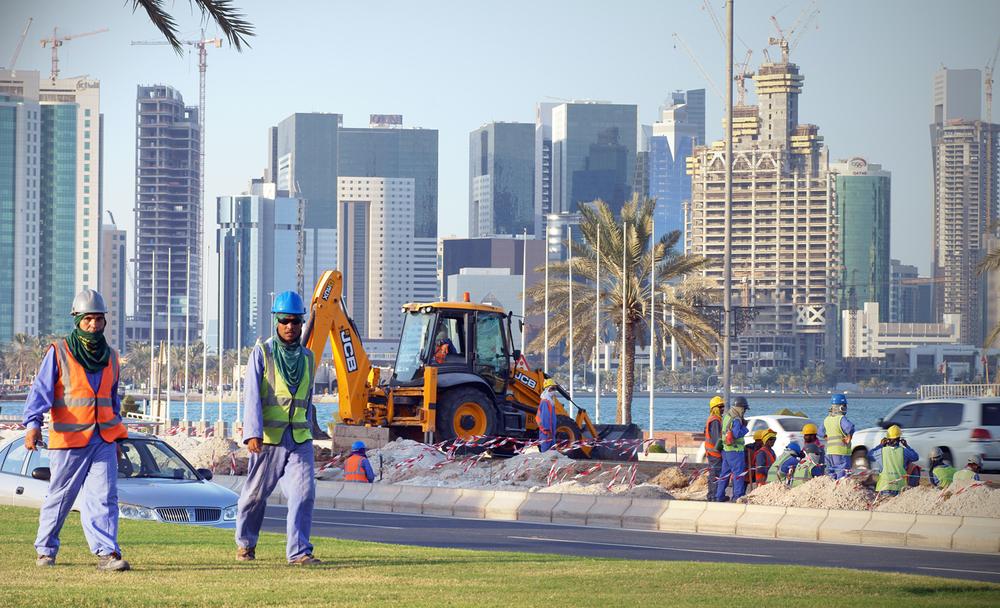William T. Hathaway

As the viciousness of capitalism engulfs ever more of us, our yearnings for change are approaching desperation. The system's current leader, Barack Obama, has shown us that the only change we can believe in is what we ourselves create.
To do that, we need to know what is possible in our times and what isn't. The bitter probability is that none of us will see a society in which we'd actually want to live. Even the youngest of us will most likely have to endure an increasingly unpleasant form of capitalism. Despite its recurring crises, this system is still too strong, too adaptable, and has too many supporters in all classes for it to be overthrown any time soon. We're probably not going to be the ones to create a new society.
But we can now lay the groundwork for that, first by exposing the hoax that liberal reforms will lead to basic changes. People need to see that the purpose of liberalism is to defuse discontent with promises of the future and thus prevent mass opposition from coalescing. It diverts potentially revolutionary energy into superficial dead ends. Bernie Sanders' "long game" campaign is really only a game similar to that of his reformist predecessor, Dennis Kucinich, designed to keep us in the "big tent" of the Democratic Party. Capitalism, although resilient, is willing to change only in ways that shore it up, so before anything truly different can be built, we have to bring it down.
What we are experiencing now is the long war the ruling elite is fighting to maintain its grip on the world. The current phase began with the collapse of Keynesian capitalism, which flourished from the 1950s into the '70s, when the primary consumer market was in the capitalist headquarter countries of North America and Western Europe. Corporations were able to stimulate domestic consumption and quell worker discontent there by acceding to labor's demands for better wages and conditions. That led to a 30-year bubble of improvement for unionized workers, predominantly male and white, that began to collapse in the '80s as capitalism gradually became globalized.
Then to maintain dominance Western corporations had to reduce labor costs in order to compete against emerging competition in low-wage countries such as China, India, Russia, and Brazil. Also international consumer markets became more important than the home market, but reaching them required low prices. So capitalist leaders reversed hard-won reforms, forcing paychecks and working conditions in the West down. And they tried to keep control of crucial Mideast oil resources by tightening their neo-imperialist hold on that region: overthrowing governments, installing dictators, undermining economies.
This aggression generated armed resistance: jihadist attacks against the West. Our response has been the current holy war against terror. All of this horrible suffering is just one campaign in capitalism's long war for hegemony. Any dominator system -- including capitalism, patriarchy, and religious fundamentalism -- generates violence.
Since we are all products of such systems, the path out of them will include conflict and strife. Insisting on only peaceful tactics and ruling out armed self defense against a ruling elite that has repeatedly slaughtered millions of people is naïve, actually a way of preventing basic change. The pacifist idealism so prevalent among the petty-bourgeoisie conceals their class interest: no revolution, just reform. But until capitalism and its military are collapsing, it would be suicidal to attack them directly with force.
What we can do now as radicals is weaken capitalism and build organizations that will pass our knowledge and experience on to future generations. If we do that well enough, our great grandchildren (not really so far away) can lead a revolution. If we don't do it, our descendants will remain corporate chattel.
Our generational assignment -- should we decide to accept it -- is sedition, subversion, sabotage: a program on which socialists and anarchists can work together.
Sedition -- advocating or attempting the overthrow of the government -- is illegal only if it calls for or uses violence. Our most important job -- educating and organizing people around a revolutionary program -- is legal sedition, as is much of our writing here on CounterCurrents.
For subversion we could, for example, focus on institutions and rituals that instill patriotism in young people. School spirit, scouts, competitive team sports, and pledges of allegiance all create in children an emotional bond to larger social units of school, city, and nation.
Kids are indoctrinated to feel these are extensions of their family and to respect and fear the authorities as they would their parents, more specifically their fathers, because this is a patriarchal chain being forged. It causes us even as adults to react to criticism of the country as an attack on our family. This hurts our feelings on a deep level, so we reject it, convinced it can't be true. It's too threatening to us.
This linkage is also the basis of the all-American trick of substituting personal emotion for political thought.
Breaking this emotional identification is crucial to reducing the widespread support this system still enjoys. Whatever we can do to show how ridiculous these institutions and rituals are will help undermine them.
For instance, teachers could refuse to lead the pledge of allegiance, or they could follow it with historical facts that would cause the students to question their indoctrination. When a teacher gets fired, the resulting legal battle can taint the whole sacrosanct ritual and challenge the way history is taught in the schools.
Subversive parenting means raising children who won't go along with the dominant culture and have the skills to live outside it as much as possible.
Much feminist activism is profoundly subversive. That's why it's opposed so vehemently by many women as well as men.
Spiritually, whatever undercuts the concept of God as daddy in the sky will help break down patriarchal conditioning and free us for new visions of the Divine.
Sabotage is more problematic. It calls to mind bombing and shooting, which at this point won't achieve anything worthwhile. But sabotage doesn't need to harm living creatures; systems can be obstructed in many ways, which I can't discuss more specifically because of the police state under which we currently live. They are described in my book Radical Peace (http://www.amazon.com/Radical-Peace-People-Refusing-War/dp/0979988691).
We'll be most successful by using both legal and illegal tactics but keeping the two forms separate. Illegal direct action is sometimes necessary to impair the system, impede its functioning, break it in a few places, open up points of vulnerability for coming generations to exploit. This doesn't require finely nuanced theory or total agreement on ideology, just a recognition of the overriding necessity of weakening this monster, of reducing its economic and military power. It does require secrecy, though, so it's best done individually with no one else knowing.
As groups we should do only legal resistance. Since we have to assume we are infiltrated and our communications are monitored, illegal acts must be done alone or in small cells without links to the group. Security is essential. Police may have the identity of everyone in the group, but if members are arrested and interrogated, their knowledge will be very limited. The principles of leaderless resistance (https://en.wikipedia.org/wiki/Leaderless_resistance) provide the most effective defense for militants.
Using these tactics, we can slow down this behemoth, curtail its expansion, make it a less effective murderer. The government will of course try to crush this resistance. But that very response can eventually seal its doom because it increases polarization and sparks more outrage. People will see the rich have not only taken away our possibility for a decent life, but now they are taking away our freedom. Then the masses revolt.
When the police and military have to attack their own people, their loyalty begins to waver. They realize they too are oppressed workers, and they start disobeying their masters. The power structure grinds down, falters, and falls. At this point the revolution can succeed, hopefully with a minimum of violence. Then the people of that generation, with the knowledge and experience we have passed on to them, can build a new society.
This is not a pleasant path of action, and those whose first priority is pleasantness are repelled by it. That's why reformism is so popular: it's an illusion that appeals to cowards. But when their backs are to the wall, which will inevitably happen, even they will fight back. And there's something glorious in that revolutionary fight even in its present stage -- much more vivid and worthwhile than the life of a lackey.
